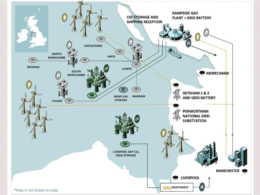At the 24th ASEAN Energy Business Forum (AEBF-24), Climate Policy Initiative (CPI) launched the Indonesia Power Sector Finance Dashboard, highlighting that the country’s annual average power sector finance flows (2019-2021) amount to only USD 5.8 billion—less than 30% of the USD 19.4 billion required annually to meet its climate targets under the Enhanced Nationally Determined Contribution (NDC). The report highlights the need for strategic shifts in investment, particularly toward renewable energy, to support Indonesia’s transition to a low-carbon economy.
The dashboard, developed through a meticulous aggregation of official datasets, addresses issues surrounding the transparency and accessibility of power sector investment data. It offers interactive features that allow users to analyse investment flows based on sources, thematic uses, and sectoral allocation. This helps government and industry stakeholders identify financing gaps and opportunities for new investments.
The investment trend analysis revealed that renewable energy (RE) investments averaged just USD 2.2 billion annually, far below the required USD 9.1 billion per year. By contrast, fossil fuel investments averaged USD 3.7 billion annually.
A large portion of fossil fuel investments came from private financial institutions, with 84% from international sources, notably China (USD 2.2 billion per year) and South Korea (USD 0.8 billion per year). This marks a shift from public to private investors in fossil fuels, though it raises concerns about the continuing dominance of fossil fuel financing.
Also, Fossil fuel investments were nearly evenly divided between coal (51%) and gas (49%) power plants. Unreported investments in captive coal plants could push actual coal investment figures higher.
The analysis also revealed that renewable energy investments, primarily sourced from international funds (58%), were concentrated in hydropower (61%) and geothermal (22%). More investment is needed in variable RE projects like solar and wind energy.
“We need visibility on whether green policies adequately accelerate green investments. Current data shows that total investment in fossil fuel power plants are almost twice the size of that in renewable energy power plants. There is a tremendous opportunity to rethink and shift those investment flows, especially from international private financial institutions as the largest contributor. By leveraging the comprehensive investment data in our dashboard, policy and investment can be optimized to build a secure, competitive, and low-carbon future for Indonesia,” said Tiza Mafira, Director of CPI Indonesia.
The dashboard also provides a detailed view of investments funneled through state-owned electricity firm PLN, offering insights into how these investments shape Indonesia’s energy market and its energy transition journey.





















